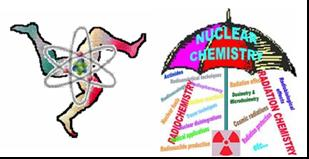Speaker
Prof.
Jan Kucera
(Nuclear Physics Institute ASCR, Rez, Czech Republic)
Description
There is a need for reliable determination of low levels of essential elements in human, animal and plant tissues, as well as for elements, which are toxic to organisms at trace concentrations. The former category of essential elements comprises B, Co, Cr, Cu, F, Fe, I, Mn, Mo, Ni, Se, Si and Zn (sometimes, depending upon the definition Li and V are added to this list), while in the latter category the toxic metals As, Cd, Hg, Pb and Tl are mostly mentioned (additionally Be, Sb and organic Sn compounds may also be considered in this category). For low-level determination of the elements As, Cd, Co, Cr, Cu, Hg, I, Mo, Ni, Sb, Se, Si, Sn, Tl various RNAA procedures were developed over the years, which frequently provided a unique possibility of determination of the above elements. Highly competitive bulk sample analytical techniques, namely various modes of AAS and ICP-MS have been developed in the last decades. Nowadays, these techniques surpassed RNAA not only in the usage frequency (which has never been a precedence of RNAA), but also in other performance characteristics. Nevertheless, there are still unique features of RNAA, such as its essentially blank-free nature, high specificity, the possibility of the chemical yield determination that yield high accuracy and low uncertainty of determination of selected elements at extremely low levels and make this technique viable and indispensable in various application fields. This paper presents a comparison of selected RNAA procedures with AAS and ICP-MS methods for most of the above elements. It aims at identification of possibilities and limitations of these techniques and applications in which RNAA should be considered a premier analytical technique for trace element analysis of biological materials. Future trends in RNAA are also outlined.
Author
Prof.
Jan Kucera
(Nuclear Physics Institute ASCR, Rez, Czech Republic)
Co-authors
Dr
Jiri Dedina
(Institute of Analytical Chemistry ASCR, Laboratory of Trace Element Analysis, Prague, Czech Republic)
Prof.
Viktor Kanicky
(Masaryk University, Faculty of Science, Department of Chemistry, Brno, Czech Republic)
